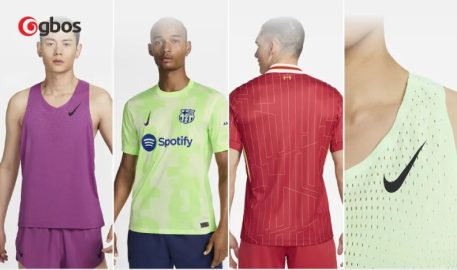-
Nov 25, 2025
 As temperatures drop, the seasonal demand for footwear rises. Leather shoes and boots—valued for their warmth and versatile texture—have become essential staples for autumn and winter outfits. No matter whether it’s business commuting, casual daily wear, or the functional needs of outdoor activities, premium leather shoes and boots adapt effortlessly to every scenario. Consumers’ expectations for footwear have evolved into a unified demand for style, comfort, and durability. They seek refined design while valuing material quality and overall wearing experience. This shift is accelerating the footwear industry’s move toward high-quality, precision manufacturing—opening significant market opportunities for advanced production equipment. 01 Shoe Manufacturing Faces the Pressure of Quality and Capacity Demands With autumn and winter orders surging, footwear manufacturers are facing multiple production challenges.In terms of efficiency, In terms of efficiency, traditional cutting equipment struggles to handle the mass processing of multiple components—such as leather shoe uppers and boot linings—making tight delivery schedules even more challenging. On the cost side, leather prices remain high, while manual nesting and cutting result in a high waste rate—further squeezing profit margins. On the quality side, inconsistencies in cutting accuracy across different production batches can lead to issues such as shape deviation and poor component...
As temperatures drop, the seasonal demand for footwear rises. Leather shoes and boots—valued for their warmth and versatile texture—have become essential staples for autumn and winter outfits. No matter whether it’s business commuting, casual daily wear, or the functional needs of outdoor activities, premium leather shoes and boots adapt effortlessly to every scenario. Consumers’ expectations for footwear have evolved into a unified demand for style, comfort, and durability. They seek refined design while valuing material quality and overall wearing experience. This shift is accelerating the footwear industry’s move toward high-quality, precision manufacturing—opening significant market opportunities for advanced production equipment. 01 Shoe Manufacturing Faces the Pressure of Quality and Capacity Demands With autumn and winter orders surging, footwear manufacturers are facing multiple production challenges.In terms of efficiency, In terms of efficiency, traditional cutting equipment struggles to handle the mass processing of multiple components—such as leather shoe uppers and boot linings—making tight delivery schedules even more challenging. On the cost side, leather prices remain high, while manual nesting and cutting result in a high waste rate—further squeezing profit margins. On the quality side, inconsistencies in cutting accuracy across different production batches can lead to issues such as shape deviation and poor component... -
Nov 14, 2025
 The 15th National Games recently kicked off in the Guangdong–Hong Kong–Macao Greater Bay Area, captivating the entire nation. On the field, athletes sprinted with full force, their fiery determination lighting up the arenas like blazing torches—igniting the public’s enthusiasm for sports in an instant. (Image Source: Shangguan News) As the nationwide passion for fitness continues to rise, sportswear that blends comfort, functionality, and fashionable design has become an essential companion for people on their athletic journeys. Behind every high-quality garment lies a quiet yet essential force: high-precision visual recognition cutting technology, which ensures superior quality through consistent and accurate cutting. 01 Under the Craze: Craftsmanship Pursuit & Manufacturing Challenges in Sportswear With the National Games driving public interest in health and fitness, consumers’ expectations for sportswear quality have been elevated. For classic patterns—such as stripes, checks, and digital prints—precise pattern alignment has become one of the most important indicators of garment quality. The alignment of shoulder seams, the continuity of side patterns, and the consistency of neckline and cuff textures all contribute directly to the garment’s final appearance. However, traditional cutting methods struggle to meet these exacting standards. ● Multi-layer stacked cutting often causes pattern displacement. ● Manual alignment is...
The 15th National Games recently kicked off in the Guangdong–Hong Kong–Macao Greater Bay Area, captivating the entire nation. On the field, athletes sprinted with full force, their fiery determination lighting up the arenas like blazing torches—igniting the public’s enthusiasm for sports in an instant. (Image Source: Shangguan News) As the nationwide passion for fitness continues to rise, sportswear that blends comfort, functionality, and fashionable design has become an essential companion for people on their athletic journeys. Behind every high-quality garment lies a quiet yet essential force: high-precision visual recognition cutting technology, which ensures superior quality through consistent and accurate cutting. 01 Under the Craze: Craftsmanship Pursuit & Manufacturing Challenges in Sportswear With the National Games driving public interest in health and fitness, consumers’ expectations for sportswear quality have been elevated. For classic patterns—such as stripes, checks, and digital prints—precise pattern alignment has become one of the most important indicators of garment quality. The alignment of shoulder seams, the continuity of side patterns, and the consistency of neckline and cuff textures all contribute directly to the garment’s final appearance. However, traditional cutting methods struggle to meet these exacting standards. ● Multi-layer stacked cutting often causes pattern displacement. ● Manual alignment is... -
Nov 05, 2025
 In the manufacturing sectors of shoes, luggage, automotive interiors, and sofa furniture, enterprises are increasingly challenged by high labor costs, low efficiency, and unstable precision in mass production. These persistent pain points have become major “stumbling blocks” for businesses striving to gain a competitive edge in the market. From the heavy reliance on skilled workers for sorting cut pieces to inefficient cutting processes that can’t keep up with order demands — and from excessive leather waste driving up costs to cluttered work areas caused by leftover materials — these issues not only restrict production capacity but also hinder overall competitiveness. 01. Bottlenecks in Traditional Mass Production In the shoe manufacturing industry, traditional production lines require significant manual labor to sort and handle cut pieces. Each skilled worker can only process a limited volume daily, and fatigue from long hours often leads to sorting errors, resulting in costly rework in later stages. In luggage production, manual positioning during leather cutting introduces variability, as different workers have distinct operation habits. This inconsistency leads to inaccurate cuts, material waste, and additional costs to correct defective products. Furthermore, the absence of efficient marking systems in traditional workflows makes it difficult to identify and match...
In the manufacturing sectors of shoes, luggage, automotive interiors, and sofa furniture, enterprises are increasingly challenged by high labor costs, low efficiency, and unstable precision in mass production. These persistent pain points have become major “stumbling blocks” for businesses striving to gain a competitive edge in the market. From the heavy reliance on skilled workers for sorting cut pieces to inefficient cutting processes that can’t keep up with order demands — and from excessive leather waste driving up costs to cluttered work areas caused by leftover materials — these issues not only restrict production capacity but also hinder overall competitiveness. 01. Bottlenecks in Traditional Mass Production In the shoe manufacturing industry, traditional production lines require significant manual labor to sort and handle cut pieces. Each skilled worker can only process a limited volume daily, and fatigue from long hours often leads to sorting errors, resulting in costly rework in later stages. In luggage production, manual positioning during leather cutting introduces variability, as different workers have distinct operation habits. This inconsistency leads to inaccurate cuts, material waste, and additional costs to correct defective products. Furthermore, the absence of efficient marking systems in traditional workflows makes it difficult to identify and match...
-
More DetailsNov 25, 2025As temperatures drop, the seasonal demand for footwear rises. Leather shoes and boots—valued for their warmth and versatile texture—have become essential staples for autumn and winter outfits. No matter whether it’s business commuting, casual daily wear, or the functional needs of outdoor activities, premium leather shoes and boots adapt effortlessly to every scenario. Consumers’ expectations for footwear have evolved into a unified demand for style, comfort, and durability. They seek refined design while valuing material quality and overall wearing experience. This shift is accelerating the footwear industry’s move toward high-quality, precision manufacturing—opening significant market opportunities for advanced production equipment. 01 Shoe Manufacturing Faces the Pressure of Quality and Capacity Demands With autumn and winter orders surging, footwear manufacturers are facing multiple production challenges.In terms of efficiency, In terms of efficiency, traditional cutting equipment struggles to handle the mass processing of multiple components—such as leather shoe uppers and boot linings—making tight delivery schedules even more challenging. On the cost side, leather prices remain high, while manual nesting and cutting result in a high waste rate—further squeezing profit margins. On the quality side, inconsistencies in cutting accuracy across different production batches can lead to issues such as shape deviation and poor component...
-
More DetailsSep 12, 2025In recent years, the concert market has experienced explosive growth. From first-tier cities to second- and third-tier cities, concerts are being held one after another. Both the number of performances and the size of audiences are reaching record highs. 01 A Ticket Stub Powers the Economy The concert economy goes far beyond ticket sales. It also fuels related industries such as merchandise, food and beverage, accommodation, and transportation. Together, these sectors form a complete industrial chain. This chain has become a powerful driver of consumption and economic growth. Fans’ enthusiasm for concert merchandise is also rising quickly. T-shirts and sweat-absorbing cheering towels are popular choices. Promotional banners enhance the atmosphere. Customized bags printed with artist images or concert themes serve both practical and emotional purposes. These products have become important ways for fans to show their love. With this momentum, the concert economy has become a promising new growth engine. Seizing this opportunity is vital for industries along the value chain. 02 Pain Points in Industry Development As demand for concert merchandise surges, supply struggles to keep up. Popular items often sell out immediately. Many fans are left empty-handed, and businesses miss valuable sales opportunities. At the same time, the...
-
More DetailsNov 14, 2025The 15th National Games recently kicked off in the Guangdong–Hong Kong–Macao Greater Bay Area, captivating the entire nation. On the field, athletes sprinted with full force, their fiery determination lighting up the arenas like blazing torches—igniting the public’s enthusiasm for sports in an instant. (Image Source: Shangguan News) As the nationwide passion for fitness continues to rise, sportswear that blends comfort, functionality, and fashionable design has become an essential companion for people on their athletic journeys. Behind every high-quality garment lies a quiet yet essential force: high-precision visual recognition cutting technology, which ensures superior quality through consistent and accurate cutting. 01 Under the Craze: Craftsmanship Pursuit & Manufacturing Challenges in Sportswear With the National Games driving public interest in health and fitness, consumers’ expectations for sportswear quality have been elevated. For classic patterns—such as stripes, checks, and digital prints—precise pattern alignment has become one of the most important indicators of garment quality. The alignment of shoulder seams, the continuity of side patterns, and the consistency of neckline and cuff textures all contribute directly to the garment’s final appearance. However, traditional cutting methods struggle to meet these exacting standards. ● Multi-layer stacked cutting often causes pattern displacement. ● Manual alignment is...
-
More DetailsSep 03, 2025On social media, curious consumption scenes often appear:A lady flaunts her Hermès Birkin bag to showcase luxury, yet orders no-name tissues online; an outdoor enthusiast wears an Arc’teryx hardshell jacket, but charges their phone with a 9.9-yuan data cable. At first glance, this seems contradictory—but it reflects a rising trend: brand value separation. 1. Why Is Brand Value Starting to Separate? The core driver of this trend is the demystification and openness of supply chains. In the past, consumers had little knowledge about which factory produced a certain pair of jeans or which supplier crafted the leather for luxury shoes. Today, however, supply chain transparency has transformed what used to be “exclusive formulas” into “public recipes” that are easily accessible. This shift erodes the monopoly of tangible brand value. When products can be replicated quickly, consumers no longer pay premiums for material exclusivity alone. But does this mean brands are destined to fail? Absolutely not.Instead, it eliminates the bubble and pushes brands back to the essence of value creation—building deeper, harder-to-replicate barriers. 2. How Can Brands Rebuild Value Barriers? The most direct approach is to excel in tangible value, creating technological barriers that ensure: What others don’t have, we provide....
-
More DetailsNov 05, 2025In the manufacturing sectors of shoes, luggage, automotive interiors, and sofa furniture, enterprises are increasingly challenged by high labor costs, low efficiency, and unstable precision in mass production. These persistent pain points have become major “stumbling blocks” for businesses striving to gain a competitive edge in the market. From the heavy reliance on skilled workers for sorting cut pieces to inefficient cutting processes that can’t keep up with order demands — and from excessive leather waste driving up costs to cluttered work areas caused by leftover materials — these issues not only restrict production capacity but also hinder overall competitiveness. 01. Bottlenecks in Traditional Mass Production In the shoe manufacturing industry, traditional production lines require significant manual labor to sort and handle cut pieces. Each skilled worker can only process a limited volume daily, and fatigue from long hours often leads to sorting errors, resulting in costly rework in later stages. In luggage production, manual positioning during leather cutting introduces variability, as different workers have distinct operation habits. This inconsistency leads to inaccurate cuts, material waste, and additional costs to correct defective products. Furthermore, the absence of efficient marking systems in traditional workflows makes it difficult to identify and match...
-
More DetailsOct 16, 2025In the apparel manufacturing industry, Sewfree technology is rapidly emerging as a new favorite thanks to its unique advantages. From comfortable seamless underwear to performance-enhancing sportswear, and from weather-resistant jackets to breathable quick-dry T-shirts, Sewfree applications are becoming increasingly widespread—winning the favor of global consumers. Consumers favor Sewfree garments primarily for their exceptional wearing experience. The seamless design eliminates the friction and discomfort caused by traditional stitches, allowing greater freedom of movement during daily wear or intense activities. It also enhances the garment’s overall aesthetics with smooth, minimalist lines that exude modern style. Moreover, the Sewfree structure improves durability by reducing seam wear and tear, extending the garment’s lifespan. However, in the front-end cutting process of Sewfree production, hot melt adhesive film cutting has become a major challenge for many manufacturers. Limited by traditional cutting technologies, numerous factories struggle with low cutting efficiency and serious material waste. Although laser cutting machines are sometimes used, their inherent laser characteristics allow cutting only one layer per pass. For enterprises focused on mass production and fast delivery, this single-layer cutting mode significantly restricts lead times and undermines market competitiveness. Against this backdrop, GBOS, backed by deep technical expertise and a spirit of innovation,...
-
More DetailsJul 30, 2025With the summer travel season in full swing, demand for travel gear such as suitcases and backpacks has surged. As tourism booms, orders for luggage products are on the rise. Today’s consumers are not only looking for durability and practicality, but also expecting higher standards in personalized design and refined quality details. Behind the travel boom lies the urgent demand from luggage manufacturers for efficient production and precision processing. Peak Season Challenge: A Dual Test of Efficiency and Quality Faced with a sharp surge in orders, manufacturers are grappling with multiple challenges. On the capacity and efficiency front, the pressure of large-scale production has fully exposed the inefficiency of traditional cutting equipment, making it nearly impossible to meet urgent delivery timelines. In terms of production costs, rising raw material prices, coupled with significant material waste during manufacturing, have made cost control increasingly difficult. Even when day-to-day production runs smoothly, manufacturers remain cautious about scaling up. After all, a single misjudgment in market demand could lead to unsold inventory and overstock — a looming risk like the Sword of Damocles. And when unexpected large-volume orders arrive, production systems often descend into chaos, struggling to respond with agility. Breaking Bottlenecks in Luggage...
-
More DetailsAug 14, 2025As the Mid-Autumn Festival approaches, mooncake manufacturers are once again preparing for a surge in orders. This festive season brings not only a rise in production but also stronger demand for refined craftsmanship in mooncake gift box packaging. Breaking Boundaries in the Packaging Industry Traditional mooncake packaging faces multiple challenges. Homogenization makes it difficult for brands to stand out. It leaves little lasting impression on consumers. Environmental shortcomings also conflict with the global push for sustainable development. In addition, the user experience remains relatively flat, often limited to the outer shell of the box. Today, sustainable production has become a prevailing trend. Consumers’ demand for eco-friendly food packaging is reshaping the entire supply chain. From material selection to production processes, standards of low energy consumption, minimal waste, and recyclability have become essential benchmarks in the international market. Smart Manufacturing: Empowering the Packaging Industry Mooncake gift box production must deliver aesthetic appeal and functionality. At the same time, it needs to align with the global consensus on green manufacturing. GBOS brings eco-conscious DNA into the packaging industry through digital innovation. This allows manufacturers to strike a balance between efficiency and sustainability. The multifunctional KC1625TT-GAT digital cutter injects new vitality into packaging...
-
More DetailsJul 26, 2025The hot and humid conditions of summer pose the ultimate test for equipment durability—demanding not only industrial-grade resistance to environmental interference, but also a well-planned and scientific maintenance approach. As a brand with 20 years of expertise in intelligent manufacturing, GBOS has developed a summer maintenance guide tailored to the unique characteristics of its equipment. This goes beyond basic upkeep—it’s a proactive strategy to safeguard consistent performance. Water Tank Maintenance ① Clean Cooling Components – Radiator Fins / Filter Screen: During summer, clean the external radiator fins and the dust filter screens at the air inlet/outlet of the chiller weekly or more frequently to prevent dust buildup from reducing cooling efficiency. Use compressed air or a soft brush for cleaning. Laser Radiator Fins: For air-cooled lasers or modules, radiator fins must also be cleaned regularly. ② Check Cooling Water Level: Check the water level in the chiller tank every day before powering on. Ensure the water level remains between the “Low” and “High” marks (red-yellow indicators on the level gauge). Water Quality: Regularly inspect water quality. Replace distilled/deionized water every month. If the water is cloudy, contains impurities, or has an odor, replace it immediately. Water Circulation: When powering on,...
-
More DetailsAug 01, 2025As the automotive industry experiences slower growth, cost reduction and efficiency improvement have become critical for suppliers to remain competitive. In this new normal, companies must restructure their strategies and operational models to overcome production challenges while seizing emerging opportunities. The acceleration of electrification and the upgrade of automotive interiors are driving a major industry transformation. Autonomous driving, new energy, and connected technologies are continuously reshaping the supply chain landscape. Leading companies are boosting factory efficiency through technological innovation—strategic upgrades of manufacturing bases are becoming essential to stay competitive in the digital era. Smart Nesting Unlocks New Levels of Leather Utilization In the fast-evolving automotive market, premium car seats start with precision leather cutting. Traditional manual nesting relies heavily on experience and often results in low material utilization. The GBOS ITS5-3012 Intelligent Leather Nesting System is transforming this process, bringing automation and efficiency to the forefront. Backed by GBOS’s deep expertise in automotive interior and exterior manufacturing, the Intelligent Leather Nesting System leverages years of algorithm optimization to deliver highly efficient nesting, significantly reducing leather waste compared to manual operations. Equipped with a 40MP industrial camera, it accurately captures leather contours and automatically stitches multiple images, enabling continuous multi-piece nesting....
-
More DetailsJun 20, 2025Amid the wave of consumption upgrading, leather has become a favorite in sectors such as automotive interiors and fashion accessories, thanks to its unique texture and durability. Booming Leather Applications and Evolving Market Needs In the automotive industry, premium leather seats and interior panels convey a strong sense of luxury and comfort. Meanwhile, in the bags and handbags market, leather products—with their wide variety of styles and personalized designs—cater to consumers’ growing pursuit of quality and fashion. Consumers are no longer satisfied with basic functionality; instead, they increasingly seek products with unique, customized designs. This shift is driving the leather industry to continuously explore the boundaries of innovation. Challenges and Dilemmas Facing Leather Manufacturers Behind the market opportunities, leather manufacturers face numerous challenges. On the supply side, high-quality leather resources are scarce and subject to significant price fluctuations, making cost control increasingly difficult. In terms of market competition, brands are engaged in intense rivalry, while consumers are placing higher demands on product quality, design, and brand identity. To stay competitive, companies must strike a balance between improving production efficiency, enhancing product quality, and building a strong brand image. Reforming and Reshaping the Leather Industry Landscape 1.Leather Cutting Solutions: Precision and...
-
More DetailsJun 25, 2025As summer temperatures soar, swimming is emerging as one of the hottest summer trends for cooling off and staying active. Market data shows a steady rise in sales of swim-related products, with swimwear in particular riding the wave of consumer demand. Surging Swimwear Demand Amid the Summer Economy Boom As an essential piece of swim gear, swimwear continues to experience growing market demand. Today’s consumers are no longer satisfied with basic functionality alone—they are increasingly seeking the perfect blend of fashion, comfort, and personalization. This evolving trend presents unprecedented challenges for swimwear manufacturers. Challenges and Bottlenecks Facing Swimwear Manufacturers Despite the surging market demand, swimwear manufacturers find themselves caught in a difficult dilemma. On one hand, traditional manufacturing processes struggle to handle elastic fabrics efficiently, often falling short in achieving precise cutting. This lack of accuracy leads to significant material waste. According to industry data, cutting errors in conventional production methods contribute to substantial fabric loss—undeniably driving up overall manufacturing costs. On the other hand, as consumer demand for personalized swimwear continues to rise, manufacturers are forced to frequently adjust their production processes to accommodate various styles and patterns. This constant adaptation significantly reduces production efficiency and extends lead times,...



 Address: #B1, 8 DongCheng Section, Songshan Lake Avenue, DongCheng District,Dongguan, Guangdong, China
Address: #B1, 8 DongCheng Section, Songshan Lake Avenue, DongCheng District,Dongguan, Guangdong, China  Tel: +86 769 88990609
Tel: +86 769 88990609  Fax: +86 769 88990677
Fax: +86 769 88990677  Email:
Email: 




